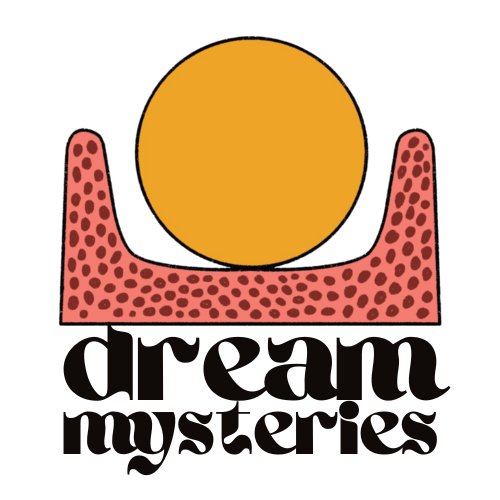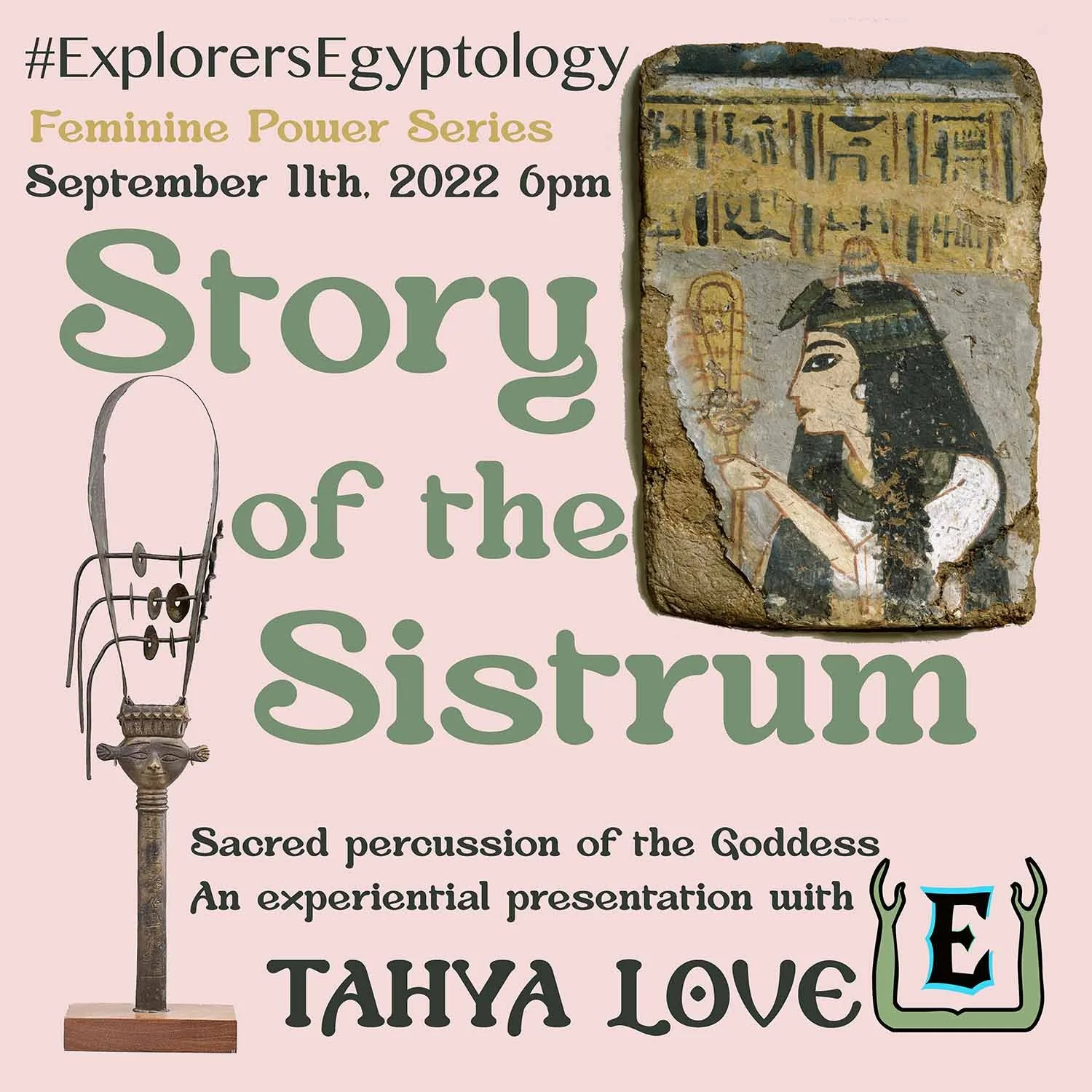Story of the Sistrum
#ExplorersEgyptology reconvenes on 11/09/2022 with Tahya Love of Sistrum :: Ceremonial Systrum aka Hathor Systrum for
The Explorers Club Events › Story of the Sistrum with Tahya Love - an experiential presentation #femininepower
Hope you can join us!
ABOUT THE PRESENTATION
In the book The Life of Meresamun: A Temple Singer in Ancient Egypt, edited by Emily Teeter and Janet H. Johnson, the role of temple musician includes the following description:
A sistrum is a rattle that was played primarily by queens, princesses, and priestesses in the course of offer- ing rituals and sacred processions. The goddess Hathor, who was known as the Mistress of Music, was so strongly associated with the sistrum that her face decorated the handle of most examples. The sistrum is also connected to the worship of Hathor through a ritual called “Plucking Papyrus for Hathor” apparently because the sound of the sistrum was equated with rustling sound that papyrus made in the marsh. This equation was further stressed by a pun, for both “sistrum” and “plucking” were Seshseshet (Sššt) in the ancient Egyptian language.
The sistrum was a sacred instrument used as rhythmical accompaniment to chanting in temple ritual as well festival processions, particularly in the worship of the goddess Hathor [pronounced Hat h’or (from ancient Egyptian hieroglyph Hwt-Hr)], the cow-eared goddess of love, joy, motherhood, mu- sic, and dance. Used by devotees of the Goddesses Hathor, Isis, and other deities in ancient Egyptian culture, the effect produced by the sistrum—when shaken in short, sharp, rhythmic pulses—was to arouse movement and activity, to clear and create sacred space, and to invoke or offer blessings. Musician priestesses (a few of whom are mentioned here- in) were responsible for chanting adorations and ritual incantations accompanied by the shimmering sounds of the sistrum in celebration and worship of the goddess Hathor.
In museums throughout the world housing artifacts from ancient Egyptian culture, two basic types of sistrum are found on display; the hooped one and the naos type. Both had close associations with the aforementioned cult of Hathor, whose face is often depicted on the handle.The sistrum’s basic shape resembles the ankh, hieroglyph/symbol for life, thus, I believe, also carrying that hieroglyph‘s meaning.
In the ancient Egyptian language this instrument’s name was sesheshet (sššt), an onomatopoeic word derived from the Ankh sounds of the instrument—that is, a soft jangling sound that resembles a breeze rustling/ blowing through papyrus. The word “sistrum” derives from the Greek verb “seistron,” meaning “that which is being shaken.” This sound was believed to please the deities of ancient Egypt, and it is believed that the use of the sistrum might have originated in the practice of shaking bundles of papyrus flowers, a symbol of Ha- thor. The papyrus marsh was an Egyptian symbol of creation and appears to be at the base of the mythology surrounding the sistrum.
ABOUT TAHYA LOVE
Tahya is a leading Dance Orientale instructor and event producer, and an ACE-certified instructor specializing in North African, Middle Eastern, and Far Eastern arts. She has performed throughout the U.S. and worldwide, including England, Scot- land, Crete, and Egypt. She was inspired to pursue these drumming and dance traditions when the hypnotic rhythms and intoxicating melodies first swept her away over 30 years ago. Her classes ele- vate each participant’s unique expression of beauty and originality. Her talent has led to collaborations with internationally acclaimed artists/musicians/ composers including David Amram, Bakithi Kum- alo, Paul Chou, Mimi Janislawski, Morocco, Paulo Mattioli, Grant Smith, and Glen Velez.

